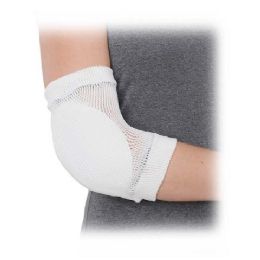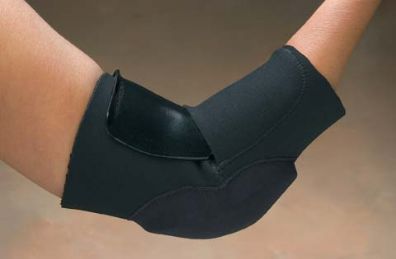












What Kind of Elbow Protection Support Device is Right for Me?
Elbow protection and support orthopedic devices are available in a wide range of sizes and configurations
to meet the numerous and unique needs of each individual user. It is important to take your measurements
exactly as the manufacturer recommends in order to find the right fit for your own personal requirements.
While some supports feature adjustability, others are uniquely sized.
Varying new materials like neoprene are used to construct these protection and support devices, making them comfortable and breathable for the user's added comfort, healing and therapy. Some supports are specifically designed to allow for elbow flexibility, while others will hold the elbow in a semi-rigid position, preventing repetitive movement that causes more pain and inflammation. Be sure to consult with your doctor to determine the best elbow
protection support for your own situation in order to receive the most benefit from wearing one.
Athletes and those who work highly physical jobs can also benefit from the use of elbow protection
devices. Wearing the right protection for the elbow can help prevent sports injuries and on-the-job injuries,
especially when repetitive motions are involved.
Conditions such as golfer's elbow and tennis elbow are not necessarily confined to golfers and tennis
players, either. These painful conditions, along with bursitis and tendonitis, can occur in any individual,
young or old. Typically seen in individuals involved with constant gripping activities, tennis elbow responds favorably to elbow strap supports, while golfer's elbow is commonly due to overuse and is also greatly helped by employing elbow strap supports. Arthritis and elbow joint pain generally respond well to neoprene elbow supports, which can also be indicated for specific support following a fracture or elbow surgery. Neoprene engenders warmth for the area, making this material extremely therapeutic for pain and swelling.
Compression straps are perfect for most of these conditions of the elbow, including bursitis and tendonitis,
as the armbands can be adjusted to compress the tendons of the forearm. This results in pressure reducing
the force transmitted through the tendon, relieving pain. Compression straps help other repetitive strain
injuries such as lateral epicondylitis, that can often cause pain when performing simple twisting movements
such as turning a door knob. Compression devices also help protect athletes from injury, or from further
injury to an already affected elbow.
Orthopedic devices for the elbow also include slings, immobilizers, braces, pads, sleeves and wraps.
Slings, braces and immobilizers are all generally utilized to hold the elbow and arm in a stationary position,
giving comfortable support and protection to keep the arm stabilized so that healing can occur more
rapidly, and that fractured bones or tendon and bursa surgical repairs can heal properly. Hinged elbow
braces encourage and help restore range of motion at that stage of the recovery process, but also help
maintain protection against further injury.
Elbow pads are usually configured to slide on to the elbow easily, and typically feature extra padding
around the elbow for additional protection and comfortable support. Elbow sleeves are similarly designed,
often used for milder support to ease pain and inflammation in cubital tunnel syndrome and radial tunnel
syndrome. Elbow wraps provide a milder form of compression support than specific strapping, but tend
to ease pain almost immediately when worn.
Rehabmart is delighted to offer a comprehensive array of elbow supports and protection
from experienced manufacturers that include Posey, DeRoyal, Captain Sports, North Coast, Independence
Medical, Medline, Bird & Cronin, McKesson Medical Surgical and many more.
Mike Price, OT & Hulet Smith, OT
Rehabmart Founders
ck